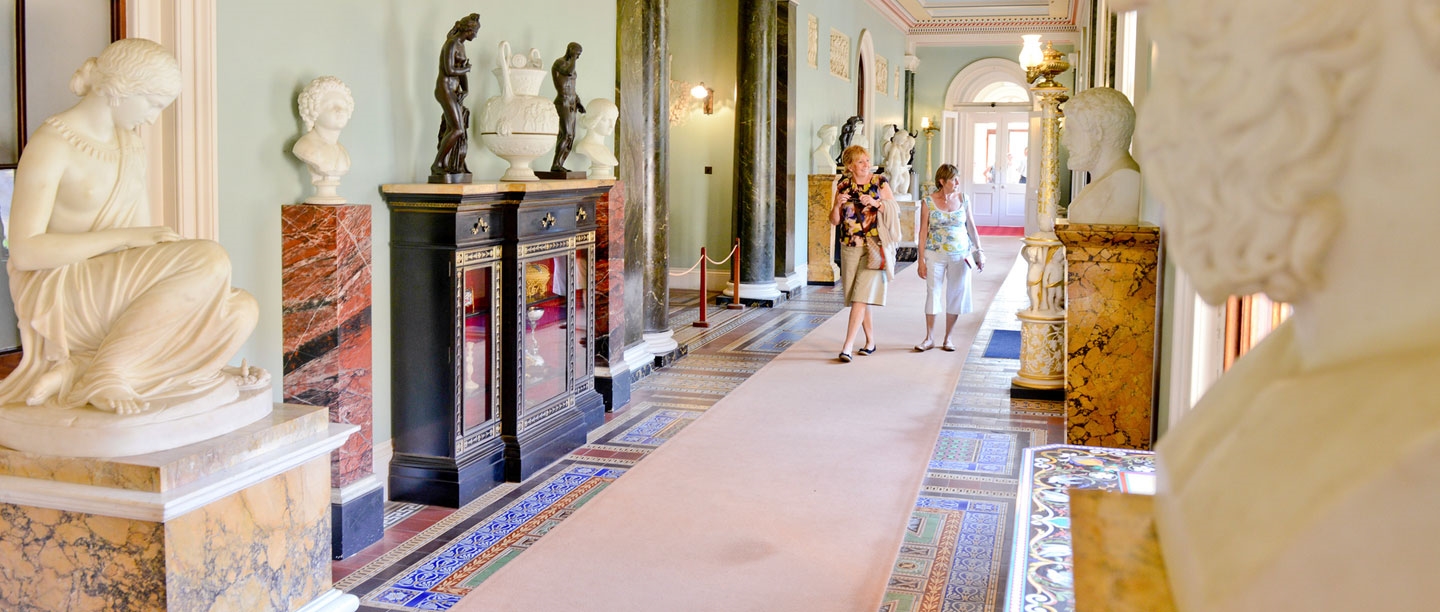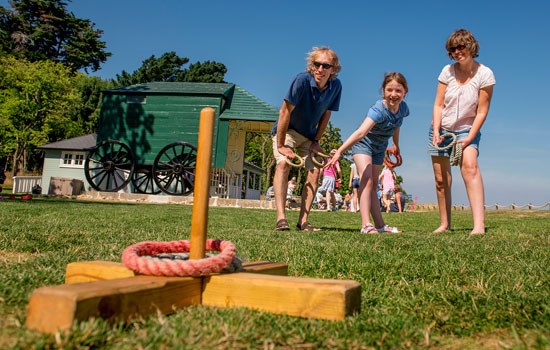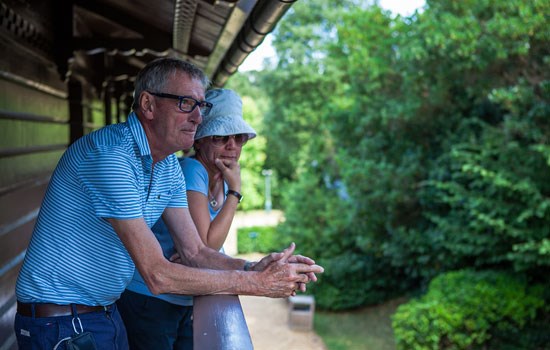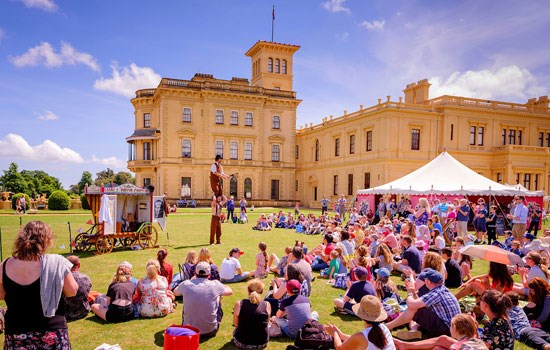Dining Room and Drawing Room
Visit the Dining Room and admire the precise setting of a table laid for the queen’s dinner, along with a copy of the exquisite family portrait of Victoria, Albert and her children by Franz Xaver Winterhalter. It was in this room that Victoria’s body lay in state in 1901, before being taken to her funeral at Windsor.
The Drawing Room is decorated sympathetically to the 1890s with yellow satin curtains, full-length mirrors and a pair of cut-glass chandeliers that were give to Victoria for one of her birthdays. Foreign royalty were often received in this room on formal occasions but the queen also used it to play cards, to sing and play the piano with members of the royal household after dinner.
Billiard Room
In the Billiard Room, you can examine an impressive billiard table by George Magnus, along with William Theed's posthumous bust of Prince Albert.
Separated from the Drawing Room by a columned screen and drawn curtains, the Billiard Room was where the men retired after dinner and could sit on a raised bench while the queen remained in the next room. The right angled plan of the billiard room, along with its columned screen and curtains, hid it from the adjacent drawing room. Technically, men were required to stand unless given permission to sit in the queen's presence.
Council Room and Audience Room
The Council Room was used most frequently for entertaining, including dancing, games of charades and drama. It was here that Queen Victoria gave Prince Albert the title 'Prince Consort', and, in 1878, where Alexander Graham Bell demonstrated his new invention - the telephone - to the queen.
The Audience Room, with its array of sumptuous original furnishings, was where the ministers of the Privy Council gathered before their meetings with the queen in the Council Room. In the centre of the room hangs a remarkable chandelier representing arum lillies and convolvulus, Albert's favourite flower.
A Telephone at Court
Edinburgh born inventor Alexander Graham Bell had long been working on experiments involving the transmission of sounds by using electricity. By 1876 he had come up with a primitive but usable telephone. On January 14 1878 – less than two years after it had been patented – Bell gave a two and a half hour demonstration of his wondrous new invention in the Council Room at Osborne. Using the telephone, an impressed Victoria was able to converse with others as far as Southampton and London. This is now generally regarded as the introduction of the telephone to Britain.
Christmas at Osborne
Each Christmas, Osborne's state rooms are lavishly decorated as the royal couple would have enjoyed them. As a child, Victoria had decorated Christmas trees with her mother, the Duchess of Kent, who introduced this Hanoverian tradition to the English court. It was a tradition enjoyed to an even greater extent by Albert, who would often take personal responsibility for dressing the family trees with candles and sweets.
To a large extent, the Christmas we know and love today has its roots in the Victorian era, and the royal family played a huge role in popularising some of our most valued traditions.
Find out MoreDurbar Room
Designed by Rudyard Kipling’s father, Lockwood Kipling, and master carver Bhai Ram Singh, this unique room is detailed with intricate Indian-style plaster work to reflect Queen Victoria’s status as Empress of India.
The room was the venue for ceremonial dinners for European royalty and the backdrop to Queen Victoria’s favourite theatrical entertainments. A new banqueting table re-creates the scene of a dinner held in the Durbar Room in the late 19th century, and Indian gifts are displayed in new cabinets.
The survival of exquisite interiors such as the Durbar room has made Osborne a popular venue for filming period pieces. Most recently, the Durbar room featured in the 2017 film 'Victoria and Abdul' by Universal studios and starring Dame Judi Dench and Ali Fazal.
Find out More
Discover More




